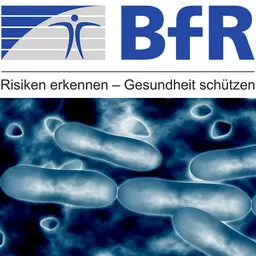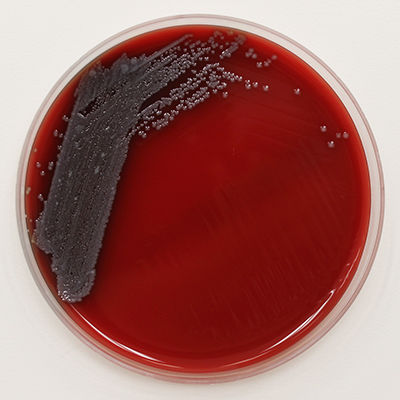pluralibacter gergoviae susceptibility
Amnigenus n 18 E. Antimicrobial susceptibility pattern was performed using the disk diffusion method.

Antibiotic Susceptibility Pattern Of Bacteria Isolated From Blood Download Table
Hence we report the first complete genome of P.
. Consequently the clinical isolates collected in the patient during antibiotherapy show a serious loss in susceptibility to cephalosporins and carbapenems 193. Enterobacter gergoviae Brenner et al. They first achieved wide notoriety as pathogens in 1976 following a nationwide outbreak of septicemia in 378 patients at 25 hospitals resulting from contaminated.
And Pluralibacter pyrinus comb. Cancerogenus n 26 E. As Pluralibacter gergoviae comb.
Antimicrobial susceptibility testing The antibiotic susceptibilities of the isolates were determined using Kirby Bauers disk diffusion method as described in the guidelines of Clinical and Laboratory Standard Institute CLSI 31. Amnigenus n 18 E. Gergoviae currently known as Pluralibacter gergoviae.
Gergoviae strains presented high methylparaben MICs ranging from 1 to 38 gL values that were 25 times higher than for Escherichia coli or Enterobacter aerogenes even in. Cancerogenus n 26 E. Pluralibacter gergoviae formerly Enterobacter gergoviae is a Gram-negative motile facultatively-anaerobic rod-shaped bacterium.
All clinical isolates of Enterobacter were classified as E. Aerogenes 34 354 E. All of the E.
All DSMZ cultures of the species. Cloacae 7 73 Cronobacter E. Gergoviae can be pathogenic especially for certain sensitive consumer groups and should not be found in.
On 7 September 2020 the BfR German Federal Institute for Risk Assessment published an Opinion in which it assesses the potential health risks of cosmetic products contaminated by the Pluralibacter P gergoviae bacteria. Global Catalogue of. Pluralibacter gergoviae formerly Enterobacter gergoviae is a Gram-negative motile facultatively-anaerobic rod-shaped bacterium.
Genomes On Line Database. There were no isolates with reduced susceptibility to ertapenem. Sakazakii 3 31.
Pyrinus into Pluralibacter gen. Gergoviae n 28 and E. The ESBL and carbapenemase genes were screened using polymerase chain reaction PCR.
Gergoviae is of special interest to the cosmetics industry as it displays resistance to parabens a common antimicrobial agent added to cosmetic products. Gergoviae n 28 and E. The disk diffusion phenotypes of all the fecal E.
Enterobacter species are motile aerobic gram negative bacilli belonging to the family Enterobacteriaceae. Enterobacter gergoviae was first proposed as a novel species in 1980. Five out of the six C.
A total of 210 non-duplicated Escherichia coli n 153 Klebsiella pneumoniae n 47 and Klebsiella oxytoca n 10 isolates which were all determined to be extended-spectrum beta-lactamase ESBL positive with the BD Phoenix automated identification and antibiotic susceptibility system Sparks USA were included in the study. Gergoviae sequenced using the Pacific Biosciences single-molecule real-time SMRT platform. Gergoviae 52 542 E.
To study antibiotic and paraben susceptibility the standard disc diffusion method and the 2-fold dilution method in LuriaBertani medium were used. Sakazakii n 35. Pluralibacter gergoviae is a member of the Enterobacteriaceae family that is occasionally associated with human infection but is commonly associated with cosmetic spoilage In previous studies we showed that industrial Pseudomonas aeruginosa strains uniquely possess large segments of DNA known as megaplasmids which confer extra.
Minimal inhibitory concentrations MICs were determined with a microdilution procedure in Isosensitest broth and cation-adjusted Mueller-Hinton broth. Objective To investigate the natural susceptibility to 69 antimicrobial agents of 107 Enterobacter strains comprising E. The major species are Enterobacter cloacae E.
Methods Minimal inhibitory concentrations MICs were determined with a microdilution procedure in Isosensitest broth and cation-adjusted. Coli isolates with reduced susceptibility to cefoxitin and ESCs and their corresponding genotypes are shown. Gergoviae is of special interest to the cosmetics industry as it displays resistance to parabens a common antimicrobial agent added to cosmetic products.
Pluralibacter gergoviae FB2 a bacterial strain isolated from packed food has been found to exhibit quorum-quenching properties. Gergoviae isolates were negative for all three genes tested. To investigate the natural susceptibility to 69 antimicrobial agents of 107 Enterobacter strains comprising E.
4 records from this provider. Look at the map. Sakazakii n 35.

Bfr Alerts On The Presence Of The Pluralibacter Gergoviae Bacteria In Cosmetics Publications

Pdf Pluralibacter Georgoviae Causing Acute Cholecystitis With Perforation

In Vitro Study To Evaluate The Antimicrobial Activity Of Various Multifunctional Cosmetic Ingredients And Chlorphenesin On Bacterial Species At Risk In The Cosmetic Industry Youenou 2022 Journal Of Applied

Pdf Neonatal Sepsis Antibiotic Susceptibility Pattern And Treatment Outcomes Among Neonates Treated In Two Tertiary Care Hospitals Of Yangon Myanmar From 2017 To 2019
![]()
Pdf Genome Sequence Of Pluralibacter Gergoviae Eco77 A Multireplicon Isolate Of Industrial Origin

Pdf Molecular Biochemical And Phenotypic Characterization Of A Newly Isolated Enterobacter Hormaechei Subsp Xiangfangensis Strain Associated With Diarrhea Cases In Iraq

Pdf Microbial Quality Diversity And Antibiotic Susceptibility Profiles Of Bacterial Isolates From Borehole Water Used By Schools In Greater Giyani Municipality Mopani District South Africa

Antibiotic Susceptibility Pattern Of Bacteria Isolated From Blood Download Table

Antibiotic Susceptibility Pattern Of Bacteria Isolated From Blood Download Table

Antibiotic Susceptibility Pattern Of Bacteria Isolated From Blood Download Table

Elective Distribution Of Resistance To Beta Lactams Among Enterobacter Cloacae Genetic Clusters Journal Of Infection

Antibiotic Susceptibility Pattern Of Bacteria Isolated From Blood Download Table

Environmental Isolate Case File Pluralibacter Gergoviae Microbiologics Blog
0 Response to "pluralibacter gergoviae susceptibility"
Post a Comment